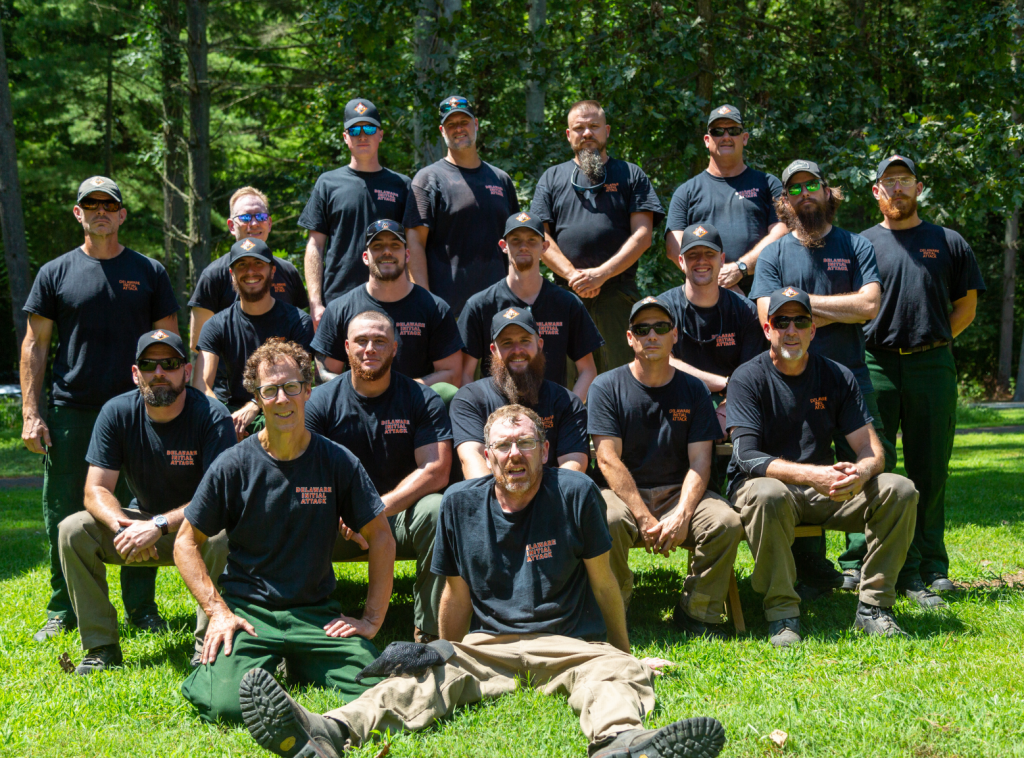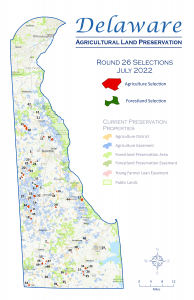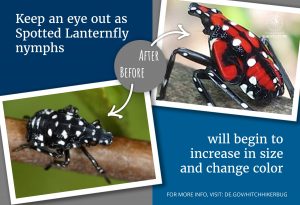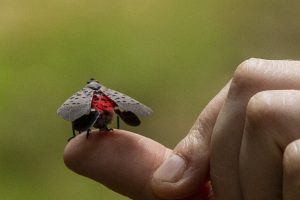Note: Pictures are available on Flickr.
DOVER, Del. (May 16, 2022) – Governor Carney, Deputy Secretary of Agriculture Nikko Brady, and state legislators honored four Delaware farm families for their commitment to keeping farmland within the family for 100 years.
“There is no better way to kick off Delaware Grown Week than to highlight the history of Delaware agriculture with the presentation of this year’s Century Farm Awards,” said Governor John C. Carney. “We are fortunate to have generations of farm families still engaged in agriculture here in Delaware.”
The Delaware Century Farm Program was established in 1987 to honor farm families who have owned and farmed their land for at least 100 years. The farms must include at least 10 acres of the original parcel or gross more than $10,000 annually in agricultural sales.
With the announcement of these four new families, Delaware will have recognized 152 Century Farms over the past 35 years. Delaware Century Farm families receive a sign for their farms, an engraved plate, a certificate, and legislative tributes.
“While the Century Farm Program has been in existence for 35 years, we know there are many Century Farms we have recognized that have been in the family for 150 years…200 years or even longer,” said Deputy Secretary Nikko Brady. “Secretary Scuse and I have charged the Aglands team to research these farms so we can recognize those families that continue to pass their farms down to the next generation. Keeping land in agriculture is essential to the success of our industry.”
2022 Delaware Century Farm Awardees
Lana Rae Eashum and Family (Dagsboro, Sussex County): The Eashum family is recognized for their 36-acre family farm located in Dagsboro Hundred.
Mr. John H. Baker purchased a 36-acre and 15-square-perch farm from Isaac W. Timmons Etux on September 28, 1899, for $11,000. After John died in 1961, the farm was left to his daughter Louise Marie Baker by operation of law. On August 29, 1994, the farm was sold to Meredith Kay Emory for $1.00 and bought back the same day by Louise Marie Baker. When Louise Marie died in 1995, she left the farm to her son, J. Caleb Eashum. In 2014, J. Caleb added his wife, Lana Rae Eashum, to the deed. In 2016, J. Caleb passed away.
Since then, his wife, Lana Rae Eashum has owned the Eashum Family Farm. Mrs. Eashum’s daughter Denise Shortridge and her husband C.J., who now lives on the farm, received the award on her behalf.
Charles L. Everett, Teresa L. (Everett) Timmons, and Chad L. Everett and Families (Clayton, Kent County): The Everett family is recognized for their 274-acre farm located in Kenton Hundred.
The original 417-acre farm was purchased by Levi L. Everett and Katherine F. Everett for $12,750 from James M. Downs on April 23, 1920. When Levi died, the farm was left to his wife Katherine and their four children, Levi, Andrew, Roy, and James. In 1936, Andrew purchased the entire farm from his mother for $6,500. After he passed in 1981, his will split the farm between his two sons, George Lee Everett and Robert L. Everett. George and his wife, Louise, purchased the 274-acre farm parcel in 1988. In 2014, with the passing of Louise, the farm was willed to her three children, Charles L. Everett, Teresa L. (Everett) Timmons, and Chad L. Everett.
This farm produces corn, soybeans, wheat, barley, and hay. The family has raised dairy and beef cows, along with hogs. In 2004, the farm had an easement established for Aglands Preservation, permanently preserving this farmland. The Everett Family has also been involved in wildlife conservation. They have four ponds on the farm and have raised and released quail, Canadian Geese, and Mallard Ducks, along with establishing dove plots.
Stanley L. Johnson and Family (Millsboro, Sussex County): Stanley Johnson and his family are recognized for their 25-acre farm in Indian River Hundred.
Mr. George T. Johnson purchased the 25-acre farm from Annie J. Hudson, John B., and Martha J. Mitchell on November 21, 1918, for $2,000. In 1976, George passed away, leaving the farm to his wife, Ella Moore Johnson, with their four children, Elizabeth Smith, Ruth Hudson, Granville L. Johnson, and Richard C. Johnson. Ella died in February 1989, leaving Granville as the Executor of her Estate. In July 1989, Richard and his wife, Patricia, purchased the farm from Granville. In 2011, the farm was put into the Richard C. Johnson 2011 Asset Preservation Trust by Co-Trustees, Stanley and Thomas C., children of Richard and Patricia. In 2018, Stanley and his wife Linda purchased the farm from the trust.
Looking back, Stanley’s grandfather, George T. Johnson, raised chickens on the farm for Townsends. The main crops grown on this Delaware farm include corn and soybeans, but they are looking to transition into more specialty crops as the younger generation gets more involved.
Alvin and Normal Warner (Milford, Kent County): Mr. Alvin Warner, and his wife, Norma, were honored at the program for their 29.3374-acre farm in Milford Hundred.
Mr. James W. Warner purchased a 121-acre farm from Willie and Jennie Russell on January 2, 1921, for $4,500. When he died, the farm was left to his wife Addie V. Warner, and their 11 children, Blanche Eisenbrey, Gordon Warner, Maude Hall, Harvey Warner, Floyd Warner, Hazel Waldron, Stella Willis, Ethel Burns, Wilbur Warner, Howard Warner, and Doris Raughley. In January 1945, son Howard purchased the 121-acre farm from his mother for $1.00. In 1976, Howard’s son Alvin and his wife Norma purchased the 29.3374 acres from the original farm. By 1979, it was determined through a survey that under Howard and his wife, Jeannette, the farm was portioned into various percentages of land owned between Joan M. and Earl H. McMullen, Robert L. and Kathleen A. Warner, and Alvin H. and Norma V. Warner. Alvin and Norma’s portion included the farm they had purchased and an additional 3.7249 acres. In 1981, Alvin and Norma transferred the 29.3374 acres farm to Warner Enterprises, Inc.
Previously a dairy farm, as evidenced by the milk house and cowshed that still stand on the farm, the family transitioned to raising poultry in 1977. They raise small grains, corn, soybeans, and Delaware Grown vegetables and produce to sell at their on-farm market.
###

 2022 marks the 26th consecutive year of easement selections by the Delaware Agricultural Lands Preservation Foundation. In this round, three farms in New Castle County, 26 in Kent County, 23 in Sussex County were preserved, and two easements for forestland preservation.
2022 marks the 26th consecutive year of easement selections by the Delaware Agricultural Lands Preservation Foundation. In this round, three farms in New Castle County, 26 in Kent County, 23 in Sussex County were preserved, and two easements for forestland preservation. Homeowners are encouraged to visit Delaware’s spotted lanternfly website at https://de.gov/hitchhikerbug to learn what the quarantine means and how to manage this invasive pest. The Delaware Homeowner Spotted Lanternfly and Treatment Fact Sheet lists pesticides labeled for planthoppers or leafhoppers sold at local home and garden stores, which can be used to kill the insect. Residents can do their part by treating nymphs and adults from May to November and scraping and destroying egg masses from December to May. Homeowners can also hire a commercially licensed turf and ornamental pesticide applicator to treat their properties for these insects.
Homeowners are encouraged to visit Delaware’s spotted lanternfly website at https://de.gov/hitchhikerbug to learn what the quarantine means and how to manage this invasive pest. The Delaware Homeowner Spotted Lanternfly and Treatment Fact Sheet lists pesticides labeled for planthoppers or leafhoppers sold at local home and garden stores, which can be used to kill the insect. Residents can do their part by treating nymphs and adults from May to November and scraping and destroying egg masses from December to May. Homeowners can also hire a commercially licensed turf and ornamental pesticide applicator to treat their properties for these insects. Residents who live near the Dover Air Force Base or in Sussex County are encouraged to report sightings of the spotted lanternfly. Citizen reports help DDA inspectors determine how these insects move and which transportation pathways they utilize. These reports also allow DDA to notify agricultural operations with plants vulnerable to this insect. Residents can make a report by using the online form at https://de.gov/hitchhikerbug or emailing
Residents who live near the Dover Air Force Base or in Sussex County are encouraged to report sightings of the spotted lanternfly. Citizen reports help DDA inspectors determine how these insects move and which transportation pathways they utilize. These reports also allow DDA to notify agricultural operations with plants vulnerable to this insect. Residents can make a report by using the online form at https://de.gov/hitchhikerbug or emailing